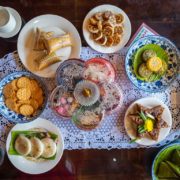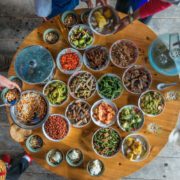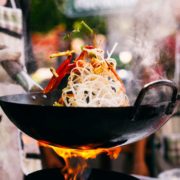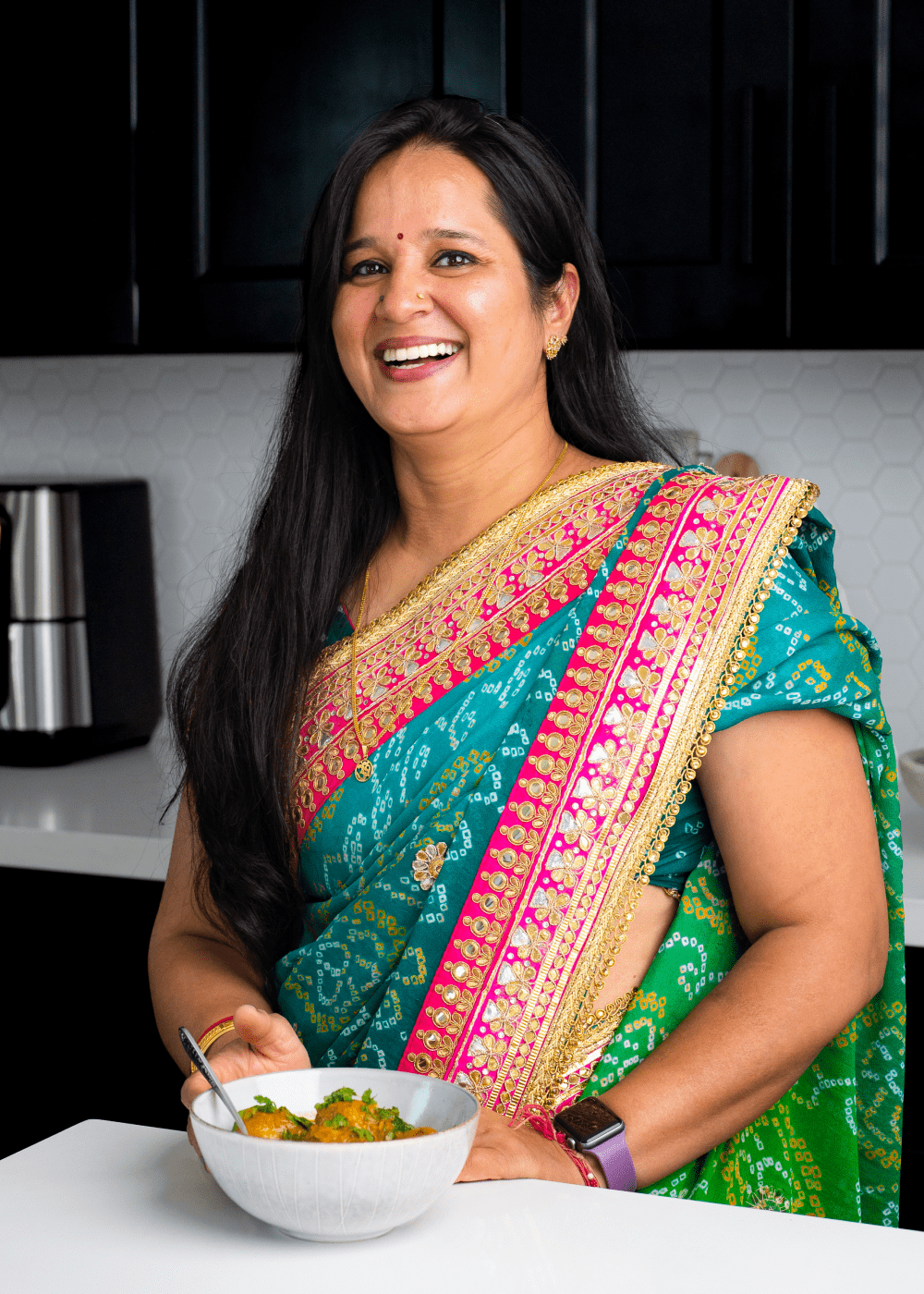Phở (Vietnamese Noodle Soup)
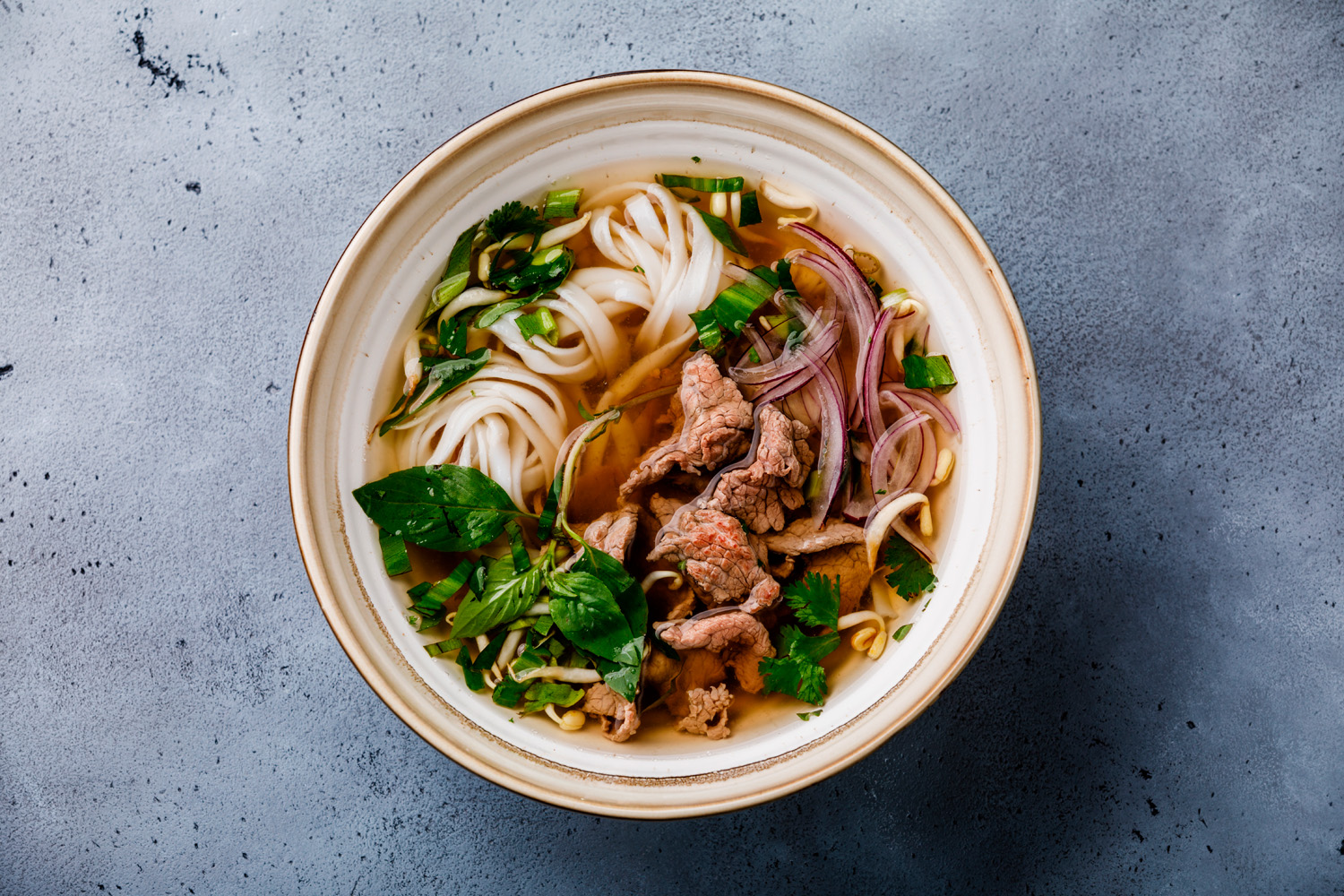
When you think of Vietnamese cuisine, a piping hot bowl of phở likely comes to mind. Phở is Vietnam’s most popular dish, with a long history beginning in the mid-1880s in Northern Vietnam during the peak of French colonialism. European influences introduced the higher consumption of red meat, which gave Vietnamese vendors more meat bones to create Nam Dinh broth, or a flavorful beef bone broth.
Soon, the traditional Vietnamese dish xáo trâu was formed, which consists of the beef broth, rice vermicelli, and buffalo meat. Eventually, this evolved into phở, which swaps the buffalo meat for beef and rice vermicelli for round rice noodles. For these reasons, phở is considered to be heavily influenced by both Vietnamese and French cooking. In fact, the name “phở” is thought to be derived from a French soup called “pot au feu.”
Phở’s popularity spread quickly to Southern Vietnam in 1954, and as it moved down south, locals infused the classic dish with more ingredients. This is why there are regional variations of phở depending on location. Northern-style phở is simpler, made with fewer ingredients (including delicate ginger slices), and often garnished with lime and green chilies. Southern-style phở consists of a complex bowl of beef broth and rice noodles topped with many ingredients, including bean sprouts, fresh herbs, slices of meat, green chiles, and lime.
While there’s an ongoing debate over which version is better, it’s no question phở’s popularity among locals and foreigners remains strong. Phở is sold on almost any street in Vietnam and in restaurants all over the world, satisfying everyone’s craving for a comforting, flavorful bowl.

